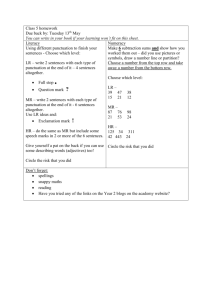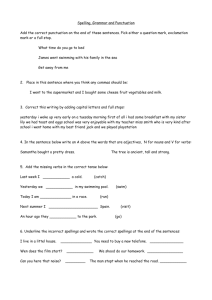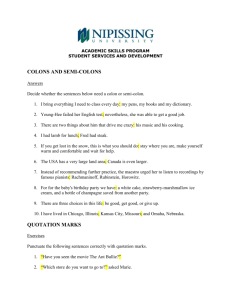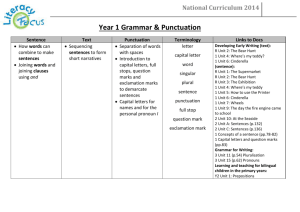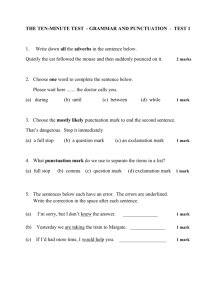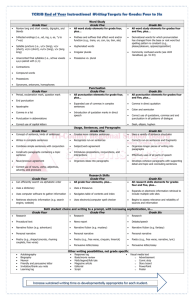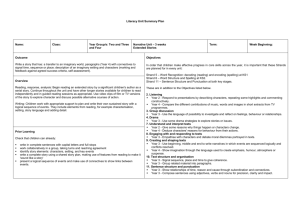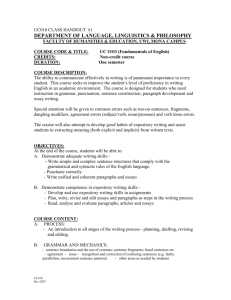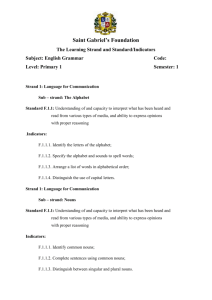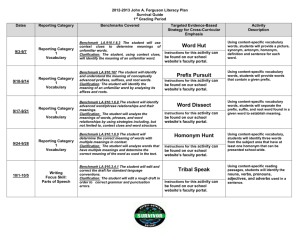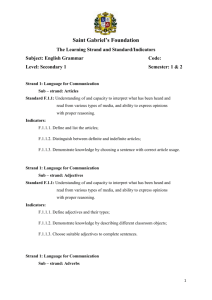Young samurai
advertisement
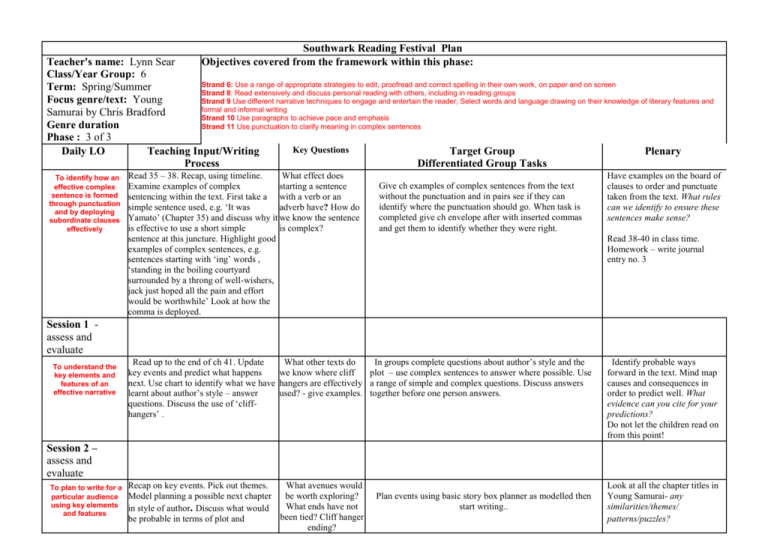
words or Southwark Reading Festival Plan Teacher's name: Lynn Sear Objectives covered from the framework within this phase: Class/Year Group: 6 Strand 6: Use a range of appropriate strategies to edit, proofread and correct spelling in their own work, on paper and on screen Term: Spring/Summer Strand 8: Read extensively and discuss personal reading with others, including in reading groups Focus genre/text: Young Strand 9 Use different narrative techniques to engage and entertain the reader; Select words and language drawing on their knowledge of literary features and formal and informal writing Samurai by Chris Bradford Strand 10 Use paragraphs to achieve pace and emphasis Genre duration Strand 11 Use punctuation to clarify meaning in complex sentences Phase : 3 of 3 Key Questions Daily LO Teaching Input/Writing Target Group Plenary Process Differentiated Group Tasks To identify how an effective complex sentence is formed through punctuation and by deploying subordinate clauses phrases effectively Read Look 35 – 38. at examples Recap, using of complex timeline.sentences. WhatIdentify effect does and Examine examples of complex starting a sentence sentencing within the text. First take a with a verb or an simple sentence used, e.g. ‘It was adverb have? How do Yamato’ (Chapter 35) and discuss why it we know the sentence is effective to use a short simple is complex? sentence at this juncture. Highlight good examples of complex sentences, e.g. sentences starting with ‘ing’ words , ‘standing in the boiling courtyard surrounded by a throng of well-wishers, jack just hoped all the pain and effort would be worthwhile’ Look at how the comma is deployed. Give ch examples of complex sentences from the text without the punctuation and in pairs see if they can identify where the punctuation should go. When task is completed give ch envelope after with inserted commas and get them to identify whether they were right. Have examples on the board of clauses to order and punctuate taken from the text. What rules can we identify to ensure these sentences make sense? Read 38-40 in class time. Homework – write journal entry no. 3 Session 1 assess and evaluate To understand the key elements and features of an effective narrative Read up to the end of ch 41. Update key events and predict what happens next. Use chart to identify what we have learnt about author’s style – answer questions. Discuss the use of ‘cliffhangers’ . What other texts do In groups complete questions about author’s style and the we know where cliff plot – use complex sentences to answer where possible. Use hangers are effectively a range of simple and complex questions. Discuss answers used? - give examples. together before one person answers. Identify probable ways forward in the text. Mind map causes and consequences in order to predict well. What evidence can you cite for your predictions? Do not let the children read on from this point! Session 2 – assess and evaluate To plan to write for a particular audience using key elements and features Recap on key events. Pick out themes. What avenues would Model planning a possible next chapter be worth exploring? What ends have not in style of author. Discuss what would been tied? Cliff hanger be probable in terms of plot and ending? Plan events using basic story box planner as modelled then start writing.. Look at all the chapter titles in Young Samurai- any similarities/themes/ patterns/puzzles? character development. Use working wall and timeline as guide. Session 3- assess and evaluate To write a narrative effectively for a particular audience drawing on and combing different language and organisational features a appropriate Model writing a new chapter from plan. Use working wall and information gathered to inform to follow events Allow time for writing. Allow 45 mins for this. Expectation is that it should be 2 sides of A4 and approx 6-12 paragraphs from L4/5 achieving children. Use writing response partners in class for quick feed back at frequent intervals. Discuss and share possible avenues explored and the reasoning behind it. Who has a sentence that is constructed well and uses effective vocabulary? Share good examples of vocabulary and figurative language used. Identify anyone who has used quality complex sentencing and layered description. Session 4 assess and evaluate Continue to share and celebrate work. Allow time for completion of writing if As above and necessary. Finally share actual ending use a range of and compare. Discuss possible future appropriate strategies to edit, novels and how the characters may/will proofread and correct develop. spelling in their own Ch to work in pairs to edit work and give responses on post its. Use 3 stars and a wish or a similar approach/framework to give feedback with. End wk by adding to class timeline of key events. Time allowed for editing/redrafting/celebrating/ Assessing according to needs work Session 5 Success Criteria: Ch will have written a new chapter as a possible ending in style of author. Ch will have identified how to use a complex sentence correctly and will be using them in context of narrative writing. Ch will have worked collaboratively to answer questions around plot and the author’s style.

